How to Prevent Soil Erosion Using Trees
- September 20, 2024
- 0 comment
Soil erosion is a serious environmental issue that can lead to the loss of fertile land and increased sedimentation in waterways. One effective strategy for combating soil erosion is the strategic use of trees. By planting and maintaining trees, you can stabilize soil, reduce runoff, and enhance the health of your landscape. In this guide, we’ll explore practical methods for using trees to prevent soil erosion and promote a healthier, more sustainable environment.
What is Soil Erosion?
Soil erosion is the process by which the top layer of soil, rich in nutrients, is gradually worn away by natural forces such as wind and water. This erosion can occur due to various factors including heavy rainfall, strong winds, and human activities like deforestation and agriculture. When the protective cover of vegetation is removed, soil becomes more vulnerable to these erosive forces, leading to the gradual stripping away of fertile soil. As a result, the land’s productivity diminishes, and ecosystems can suffer from decreased soil fertility and increased sedimentation in rivers and streams.

In addition to reducing agricultural productivity, soil erosion can lead to a range of environmental problems. It contributes to water pollution by increasing sediment loads in waterways, which can harm aquatic habitats and reduce water quality. Furthermore, eroded soil can carry harmful chemicals and nutrients into water bodies, exacerbating issues such as algal blooms and dead zones. Addressing soil erosion is crucial for maintaining healthy landscapes and ensuring the sustainability of both natural and agricultural systems.
Signs of Soil Erosion
Wet Patches
When water runoff occurs, it doesn’t simply evaporate; it often moves to other areas of your yard, leading to the formation of wet patches or large puddles. These patches are usually the result of water accumulating in low-lying areas where it cannot easily drain away. This excess moisture can create problems by fostering the growth of unwanted vegetation and increasing the risk of further erosion in these spots. Additionally, these wet areas can become breeding grounds for pests and contribute to the deterioration of your yard’s overall health.

Over time, persistent wet patches can lead to more severe issues such as soil compaction and reduced aeration. The continuous presence of water can also promote the development of mold and fungi, which can negatively impact plant health and soil structure. Properly managing water runoff and improving drainage solutions are essential steps in preventing these problematic wet patches from forming and ensuring a healthier yard environment.
Ravines
Ravines or gullies are indicators of severe soil erosion and represent a more advanced stage of erosion problems. These formations appear as small trenches or channels in the landscape where water runoff has caused significant soil displacement. Typically, ravines are formed in areas where water flow is concentrated, often exacerbated by the removal of vegetation or improper land management practices. As water channels deepen, they can lead to the loss of valuable topsoil and further exacerbate erosion issues in surrounding areas.
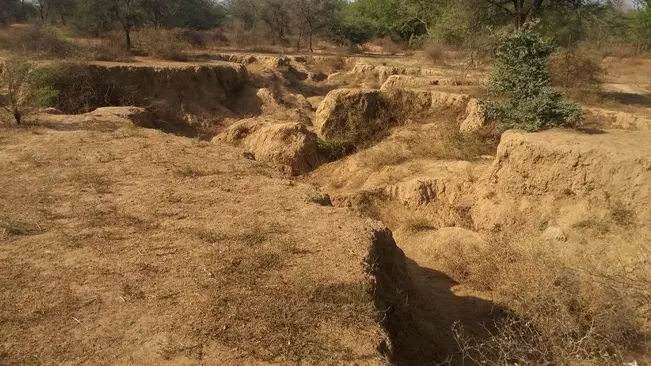
Addressing ravines requires targeted erosion control measures such as installing retaining walls, planting cover crops, or implementing drainage systems to redirect and slow down water flow. Without intervention, ravines can expand, causing more extensive damage to the land and making restoration efforts more challenging. Preventing the formation of ravines through proactive soil and water management is crucial for maintaining soil health and landscape stability.
Cracks In Soil
Cracks in soil often occur as a result of water runoff carrying away the top layer of fertile soil, leaving behind dry and brittle ground. These cracks are typically most visible in areas where soil has become overly dry or where significant erosion has taken place. The absence of the topsoil layer not only leads to the formation of these cracks but also diminishes the soil’s ability to retain moisture and support plant growth. As a result, plants in these areas may struggle to establish roots and thrive.
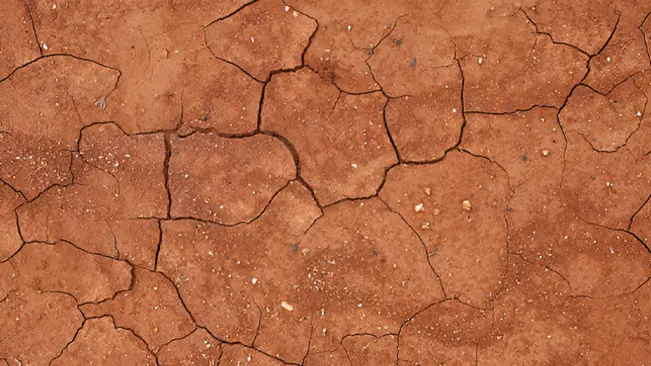
The presence of soil cracks can also indicate underlying issues with water management and soil health. These cracks can exacerbate erosion by allowing further runoff to penetrate deeper into the soil, leading to more extensive soil degradation. To combat soil cracking, it’s important to implement measures that enhance soil structure, such as adding organic matter or using erosion control techniques to stabilize the soil and restore its ability to hold moisture effectively.
How Can Trees Help
Root System
A tree’s expansive root system plays a crucial role in preventing soil erosion by anchoring the soil in place. The roots spread out widely beneath the surface, creating a network that binds loose soil particles together. This stabilization reduces the likelihood of soil being washed away by water or wind. In addition to holding the soil, the roots also improve soil drainage by creating channels that allow water to percolate into the ground rather than flowing over the surface. This enhanced drainage helps to maintain soil structure and fertility, as well as reduce surface runoff.
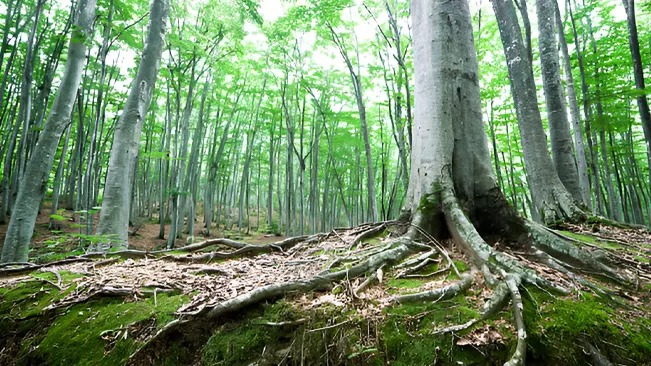
Furthermore, tree roots contribute to preventing soil compaction, a condition where soil becomes dense and hardened due to pressure or repeated use. Compacted soil has reduced pore space, which limits water infiltration and increases runoff. By preventing soil compaction, trees promote better water absorption and reduce the risk of erosion. Their roots also support soil aeration, which is beneficial for plant health and further aids in maintaining soil stability.
Canopies
The canopies of trees provide significant protection against soil erosion by intercepting rainfall before it hits the ground. As rainwater lands on the leaves and branches, it is gradually channeled down to the soil rather than striking it with force. This process helps to disperse the energy of the raindrops, reducing the potential for soil erosion caused by heavy rainfall. The water that does reach the ground is absorbed more effectively, minimizing soil displacement and degradation.
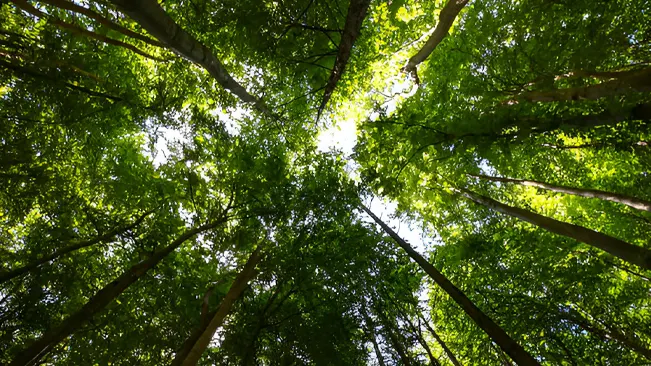
Additionally, tree canopies play a role in mitigating wind erosion. The dense foliage acts as a barrier against strong winds, reducing their ability to lift and carry soil particles. In areas with large groupings of trees, this windbreak effect becomes even more pronounced, providing enhanced protection against both wind and water erosion. This combined protection from rain and wind helps maintain soil integrity and supports overall landscape health.
Transpiration
Transpiration is a vital process through which trees help manage soil moisture and prevent erosion. During transpiration, water is absorbed by the roots from the soil, travels through the tree’s stems, and is released into the atmosphere through the leaves. This process not only helps regulate the amount of moisture in the soil but also maintains a balance that prevents the soil from becoming overly saturated. By keeping the soil at an optimal moisture level, transpiration reduces the likelihood of waterlogged conditions that can lead to increased runoff and erosion.
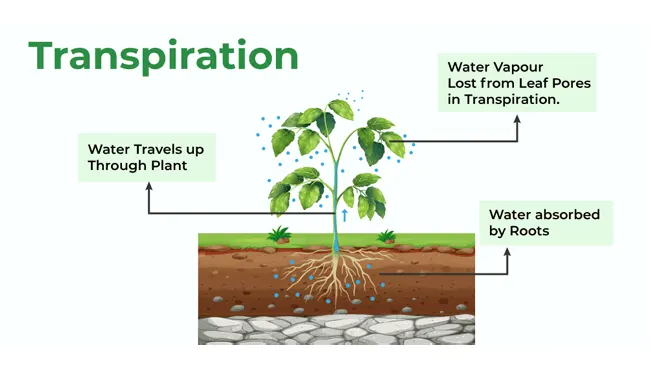
Moreover, the continuous movement of water through the tree contributes to soil stability. As water is drawn up by the roots, it helps bind soil particles together, reinforcing the soil structure and making it more resistant to erosion. This natural regulation of soil moisture and stability is a key factor in maintaining healthy, erosion-resistant landscapes, demonstrating the importance of trees in effective soil conservation practices.
Trees
Eastern Red Cedar (Juniperus virginiana)
Eastern Red Cedar is a highly resilient tree, well-suited for challenging slope environments due to its drought tolerance and ability to stabilize soil. Its root system is extensive and fibrous, creating a network that binds loose soil particles together, effectively reducing erosion. This feature is crucial for maintaining soil structure on sloped terrains where runoff can be a significant issue. The tree’s evergreen foliage provides year-round coverage, which further shields the soil from the direct impact of rain and helps to reduce water runoff.
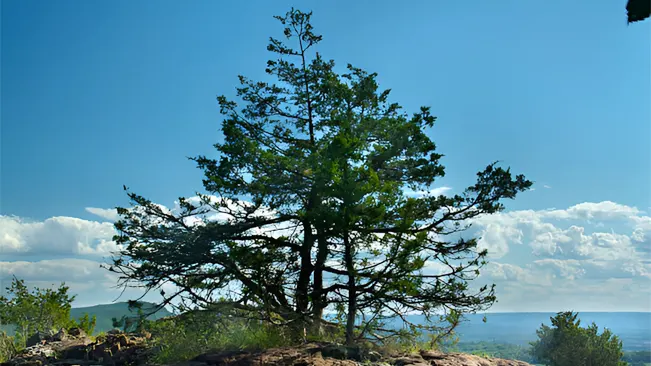
In addition to its erosion control benefits, Eastern Red Cedar offers ecological advantages. The tree’s dense canopy provides shelter and food for various wildlife species, enhancing biodiversity on slopes. Its ability to thrive in poor soil conditions and its low maintenance needs make it a practical choice for long-term soil stabilization projects. Moreover, the tree’s aromatic wood and attractive foliage add aesthetic value to any landscape, making it a functional and visually appealing option for hillside planting.
Black Locust (Robinia pseudoacacia)
Black Locust is recognized for its rapid growth and robust root system, which makes it an excellent choice for controlling erosion on steep slopes. The tree’s roots penetrate deep into the soil, anchoring it effectively and preventing soil displacement. This deep rooting system is particularly beneficial for stabilizing slopes and preventing landslides. Additionally, Black Locust is known for its ability to improve soil fertility through its nitrogen-fixing properties. This trait enhances soil quality by increasing nitrogen levels, which in turn supports the growth of other vegetation and contributes to a healthier ecosystem.

The Black Locust tree also offers practical benefits beyond erosion control. Its wood is valued for its durability and resistance to rot, making it useful for various construction purposes. Its attractive clusters of fragrant white flowers in the spring add aesthetic appeal, while its fast growth ensures quick establishment and soil stabilization. Overall, Black Locust is a versatile and effective tree for managing soil erosion and enhancing slope stability.
American Holly (Ilex opaca)
American Holly is a robust evergreen tree that is well-suited for stabilizing soil on hillsides and slopes due to its strong root system and adaptability to various soil conditions. Its roots extend deep and wide, providing excellent soil anchorage and reducing the risk of erosion. The tree’s dense, glossy foliage offers effective protection against rainfall, minimizing soil displacement and runoff. This characteristic is especially valuable on slopes where water runoff can be a major issue.
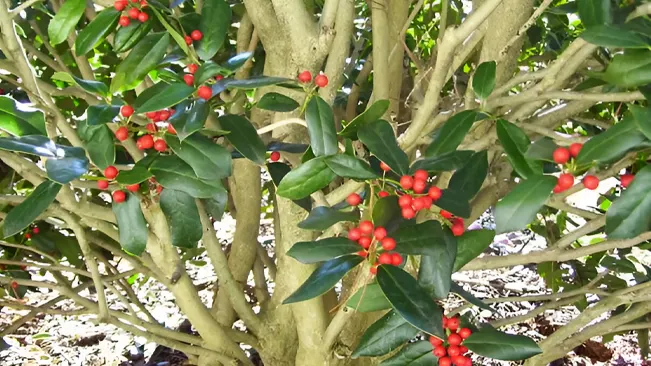
Beyond its practical benefits, American Holly adds aesthetic and ecological value to the landscape. Its bright red berries and vibrant green leaves provide visual interest throughout the year, making it a popular choice for ornamental planting. Additionally, the tree serves as a habitat for various bird species, contributing to local wildlife diversity. Its resilience and low maintenance requirements make American Holly a valuable addition to erosion control efforts and hillside beautification projects.
Red Maple (Acer rubrum)
Red Maple is a versatile and adaptable tree that excels in stabilizing soil on a variety of slopes and soil types. Its extensive root system plays a key role in preventing soil erosion by binding soil particles together and improving soil structure. The tree’s ability to thrive in both wet and dry conditions makes it particularly suitable for areas with variable moisture levels, providing stability across different slope gradients.
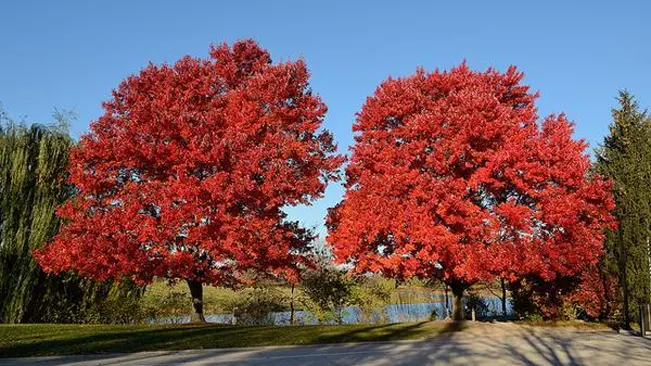
In addition to its erosion control benefits, Red Maple is valued for its striking seasonal changes. The tree’s foliage turns brilliant red in the fall, adding a splash of color to the landscape. Its adaptability and resilience make it a practical choice for diverse planting environments, and its attractive appearance enhances the aesthetic appeal of any hillside or slope. Red Maple’s combined benefits of soil stabilization and visual interest make it an excellent choice for erosion control and landscape enhancement.
Shrubs
Rugosa Rose (Rosa rugosa)
Rugosa Rose is a highly resilient shrub known for its adaptability to challenging environments, including coastal and hilly areas. Its root system is extensive and robust, effectively anchoring the soil and preventing erosion. This feature is particularly valuable in areas prone to soil displacement, where maintaining soil stability is crucial. The shrub’s dense, spreading growth forms a natural ground cover that protects the soil from rain impact and wind, further enhancing its erosion control capabilities.
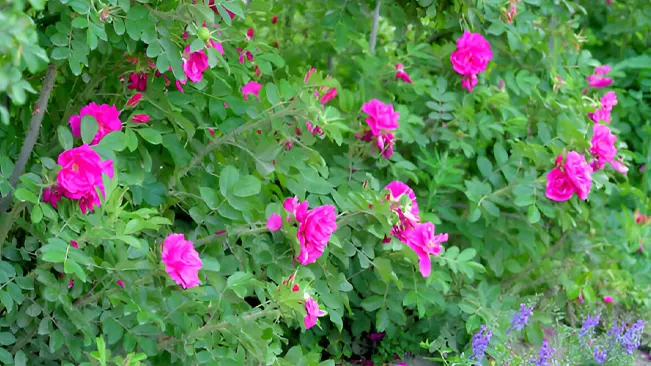
In addition to its soil-stabilizing properties, Rugosa Rose offers several ecological and aesthetic benefits. The shrub produces fragrant, colorful flowers and large, ornamental hips that attract pollinators such as bees and butterflies. Its ability to thrive in poor soil conditions and tolerate salt makes it an ideal choice for coastal regions as well. Rugosa Rose’s low maintenance needs and resilience in harsh conditions make it a practical and attractive option for erosion control on slopes and other challenging landscapes.
Buffalo Berry (Shepherdia argentea)
Buffalo Berry is a hardy shrub that excels in arid and slope environments due to its drought resistance and strong root system. Its roots penetrate deeply into the soil, providing effective anchorage that helps prevent erosion on steep or unstable slopes. This adaptability to low-water conditions makes it particularly suitable for areas where water availability is limited, ensuring soil stability even in challenging climates.
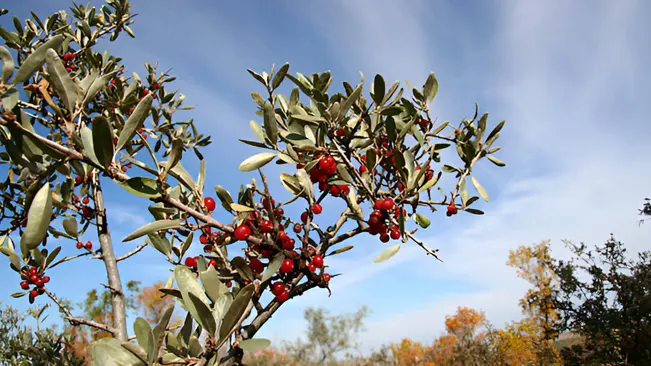
Moreover, Buffalo Berry contributes to the ecological health of the area by offering habitat and food for wildlife. The shrub produces small, bright red berries that are a food source for birds and other wildlife. Its silvery foliage provides a distinctive appearance, adding visual interest to the landscape. Buffalo Berry’s combination of erosion control, drought tolerance, and wildlife benefits makes it a valuable choice for sustainable landscaping in arid and sloped areas.
Mountain Laurel (Kalmia latifolia)
Mountain Laurel is well-adapted to hilly and rocky environments, making it an excellent choice for stabilizing soil on slopes. Its shallow but dense root system effectively binds the soil, reducing erosion and providing stability on challenging terrains. The shrub’s evergreen foliage offers additional protection by intercepting rainwater and reducing soil displacement caused by heavy rainfall.
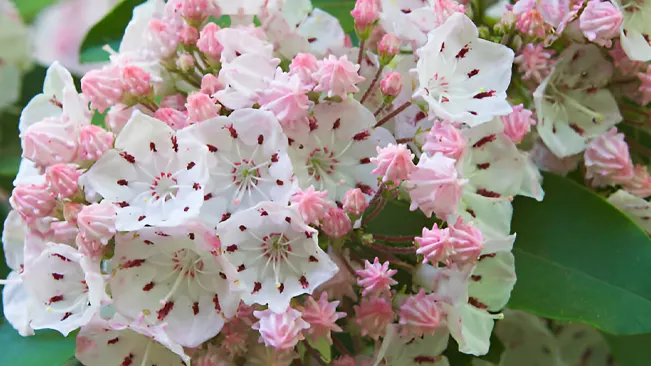
This native shrub also enhances the aesthetic appeal of the landscape with its striking clusters of pink or white flowers that bloom in late spring. Mountain Laurel thrives in acidic, well-drained soils and can tolerate partial shade, making it suitable for a variety of slope conditions. Its ability to stabilize soil while providing visual interest and ecological benefits makes it a valuable addition to any erosion control strategy on sloped or rocky terrain.
Spirea (Spiraea spp.)
Various species of Spirea are highly effective for erosion control due to their spreading root systems and dense, compact growth. The shrubs form a ground cover that helps prevent soil displacement and stabilize slopes by binding the soil with their extensive root networks. Their adaptability to different soil types and conditions makes them versatile options for erosion control across a range of environments.
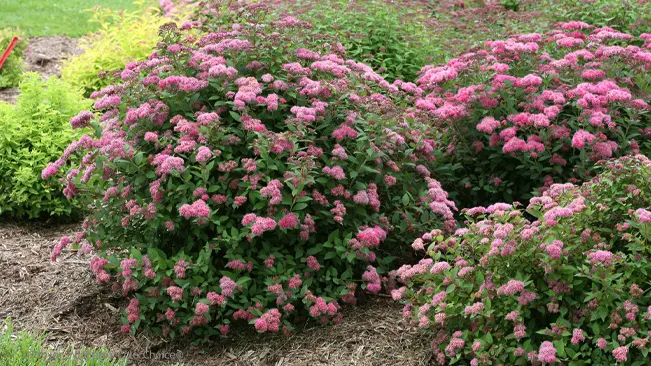
Spirea shrubs also offer aesthetic and ecological benefits. They produce an array of colorful flowers, which attract pollinators such as bees and butterflies, enhancing the biodiversity of the area. Additionally, their low maintenance requirements and ability to thrive in various conditions make them a practical choice for long-term erosion management. By providing ground cover and contributing to the health of local ecosystems, Spirea shrubs play a significant role in maintaining soil stability and enhancing the beauty of sloped landscapes.
Conclusion
Preventing soil erosion using trees is both a practical and environmentally beneficial strategy. Trees play a crucial role in stabilizing soil through their extensive root systems, which anchor the soil and reduce the risk of erosion caused by wind and water. Their canopies provide vital protection from heavy rainfall, dispersing the impact of rain and minimizing soil displacement. Additionally, the process of transpiration helps maintain soil moisture levels, further preventing erosion by keeping the soil from becoming too saturated.
FAQs
- What is soil erosion and why is it a problem?
Soil erosion is the process where the top layer of soil is worn away by natural forces like wind and water. It can lead to loss of fertile land, reduced agricultural productivity, and increased sedimentation in waterways, which can harm aquatic ecosystems and degrade water quality. - How do trees help prevent soil erosion?
Trees help prevent soil erosion through their extensive root systems, which stabilize the soil by binding loose particles together. Their canopies reduce the impact of rainfall, dispersing it more gently onto the ground, and their transpiration process helps regulate soil moisture levels, preventing excess runoff. - Which types of trees are best for controlling erosion on slopes?
Trees such as Eastern Red Cedar, Black Locust, American Holly, and Red Maple are particularly effective for erosion control. These species have robust root systems, adaptability to various soil conditions, and can withstand environmental stressors, making them ideal for stabilizing slopes and preventing erosion. - What are some benefits of using trees for soil erosion control besides stabilizing soil?
In addition to preventing soil erosion, trees offer several benefits including enhancing biodiversity, providing habitat for wildlife, improving air quality, and adding aesthetic value to landscapes. They also contribute to climate regulation through carbon sequestration and can improve water quality by filtering runoff. - How do I choose the right tree species for my area?
When choosing tree species for erosion control, consider factors such as your local climate, soil type, and specific slope conditions. Native species are often a good choice as they are adapted to local environmental conditions. Consulting with a local forestry expert or horticulturist can help you select the most suitable species for your needs. - What are some additional measures I can take to prevent soil erosion alongside planting trees? Besides planting trees, other erosion control measures include installing terraces, building retaining walls, using ground covers, and implementing proper drainage systems. Combining these techniques with tree planting can provide a more comprehensive approach to soil conservation.
- How long does it take for trees to effectively prevent soil erosion?
Trees can start providing erosion control benefits shortly after planting, but they typically reach their full potential in stabilizing soil after a few years of growth. The time frame depends on the species, growth rate, and environmental conditions. - Can I plant trees on steep slopes or only on gentle slopes?
Trees can be planted on both steep and gentle slopes. However, for very steep slopes, additional erosion control measures such as terracing or using erosion control blankets may be necessary to support the young trees and ensure their establishment. - How do I care for trees planted for erosion control?
Proper care includes regular watering, especially during the establishment period, mulching to retain soil moisture and suppress weeds, and monitoring for pests and diseases. Pruning and maintaining healthy trees will also ensure their continued effectiveness in preventing soil erosion. - What should I do if my trees are not growing well or are failing to control erosion?
If your trees are struggling, assess factors such as soil quality, water availability, and potential pests or diseases. Consult with a forestry expert to identify issues and consider alternative erosion control methods if necessary. Ensuring proper planting techniques and ongoing care can help improve the health and effectiveness of your trees.

Joel Cunningham
Forestry AuthorI'm Joel Cunningham, an expert in pruning and weed management with over a decade of experience. My skills are rooted in formal training and extensive practice, focusing on advanced pruning techniques and efficient weed control. I'm known for my quality work, precision, and deep understanding of plant health and soil dynamics. My contributions extend to educational initiatives where I share sustainable practices and advice, establishing myself as a reliable and authoritative figure in the gardening community.

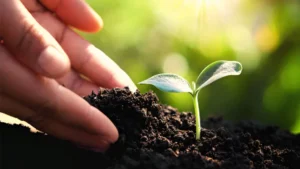
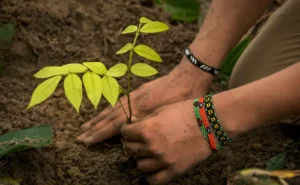
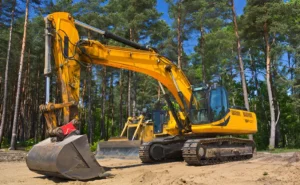
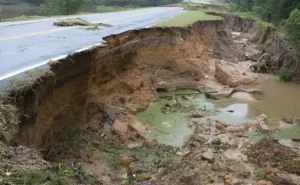
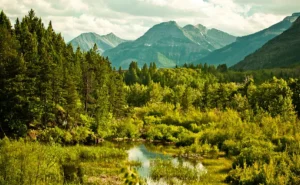
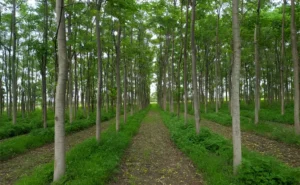

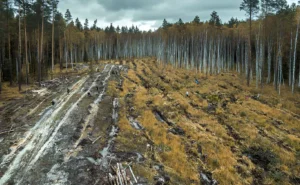

Leave your comment